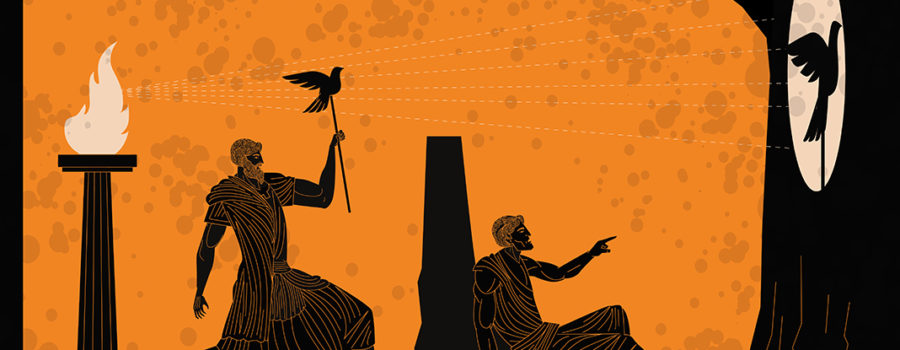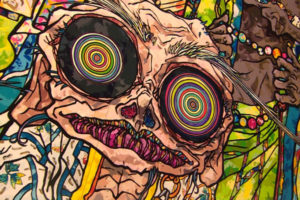November | TRUTH
Plato’s Allegory of the Cave: Is it Safe to Speak Your Truth?
By Tricia Stewart Shiu
“Deep Down” – De’Borah
“In a time of universal deceit – telling the truth is a revolutionary act.”
—George Orwell—
When, if anytime, is it safe to speak your truth?
Explosive allegations flood our already saturated psyches, not on a daily basis, but on an hourly basis. We are bombarded by information and it is our job to decide whether or not it’s true.
ARTISTIC ALLEGORY | LE MOT JUSTE
It is our existential struggle to manage the deluge while attempting to actually have an opinion about any number of subjects.
Of course, we all aim to be clear in the gathering of this information and the assumption is that a percentage of it, hoping, of course, that more than half, is true.
 Even if this information is all true and we’ve managed to filter out any encroaching “faux info” and, actually, get to the truth, what do we do once we’re there?
Even if this information is all true and we’ve managed to filter out any encroaching “faux info” and, actually, get to the truth, what do we do once we’re there?
In the most positive of assumptions, let’s say you have the absolute truth, you know it with every fiber of your being and are the most certain you have ever been in your entire life—what next?
Who do you tell? How do you tell it? And most importantly, is it possible to manage others’ reactions?
Plato‘s allegory springs to mind.
Although originally published to describe “the effect of education and the lack of it on our nature” The allegory, first published in Plato‘s Republic, cuts to the core of one’s feelings associated—on or before the time—with sharing one’s truth and, in fact, exemplifies his own efforts to educate the public.
Plato (428-348 BCE) framed the story as a discussion between Plato’s brother, Glaucon and Plato’s teacher, Socrates (469/470-399 BCE, who is considered the father of western philosophy), begins with a group of people who have lived their entire lives chained to a cave wall. Their only view is a blank wall in front of them and the shadows created by a nearby fire.
In Plato’s The Republic, he writes: “See human beings as though they were in an underground cave-like dwelling with its entrance, a long one, open to the light across the whole width of the cave. They are in it from childhood with their legs and necks in bonds so that they are fixed, seeing only in front of them, unable because of the bond to turn their head all the way around.”
“Like the fire that casts light on the walls of the cave, the human condition,” says Wikipedia, “is forever bound to the impressions that are received through the senses.”

Ghajn Tuta Cave at Mellieha in Malta. An ideal place for rock climbing, to spend a night under the stars and to speak your truth.
Socrates is eventually freed from the bondage and comes to realize that the shadows are not reality, As the chained people have come to believe. Although it takes time for his eyes to adjust to the real images around him, he finally understands the true source of light (the sun) and those who were creating the shadows (people carrying items past the caves entrance).
When Socrates returns to the cave, to share his newfound understanding with the people imprisoned within the cave, they violently resist being freed.
Alex Gendler’s video, “Plato’s Allegory of the Cave,” says, “Most people are not just comfortable in their ignorance, but hostile to anyone who points it out.”
It is never easy to stand in one’s truth, especially when doing so, threatens our well-being.
In “Plato’s Allegory of the Cave: Life Lessons on How to Think for Yourself,”
Mayo Oshin surmises, “It’s not because they’re better than everyone else that they’ve “escaped the cave.” It’s simply because they’ve made a decision to consistently step outside their comfort zone, face their fears and think in a unique way.”
After century upon century of philosophical discussion, it is no wonder that we still grapple with the simple act of consciously choosing to observe, discern and, even, speak about our learning.
Perhaps we can find comfort in knowing that those who dedicated their lives to such feats more than 2,400 years ago, were in the same boat. If anything, progress can be measured by the passage of time and the experiences documented by these brave people.





